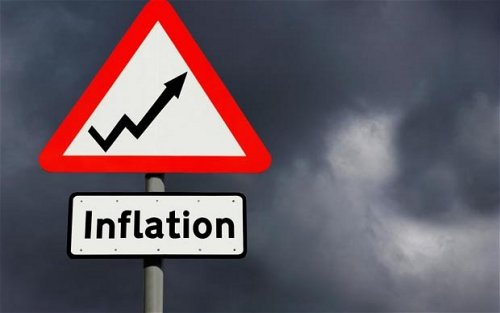Inflation Spikes In Laos
Source: Vientiane Times
Laos has steadily faced a higher Inflation rate over the past five months after being pressed by several economic factors.
The changes in consumer prices index, as a result of expensive commodities such as oil, gold and food weakening the value of the Lao currency (kip), is a key element to push up the rate. This satiation creates concerns for consumers and business entrepreneurs.
According to data from the website of the Bank of the Lao PDR in January this year, the inflation rate was 1.5 percent and continued to inch up to 1.57 percent in February. By March it was 1.66 percent, 2.21 percent in April and 2.54 percent in May. On average, inflation has risen by 1.9 percent over the past five months.
According to the annual plan, the government has set a ceiling of inflation at 5 percent.
However, when compared with the same period last year, the rate of the first five months of this year was a little higher.
In January 2018, the rate was 0.95 percent. It was fairly low compared to the first month of 2019. The rate recorded in February of last year was 1.75 percent, 1.91 percent for March, 1.88 percent for April and 1.97 percent for May. In the first five months of last year, the rate was nearly 1.7 percent. It was a bit lower than the five months of this year.
Associate Professor and Vice Dean of the Faculty of Economics and Business Management, Dr Phouphet Kyophilavong, told Vientiane Times last Friday that higher inflation is due to several factors. The first reason is money flow, the weaker value of kip is the second and expensive fuel, the third.
Dr Phouphet said the more the money supply, the more inflation goes up.
According to a report of the Prime Minister, Mr Thongloun Sisoulith, at a recent meeting of the National Assembly, the money flow was 9 percent over the past five months. While the figure provided in the National Assembly is an average, it has not exceeded 20 percent annually).
The value of the kip against the US dollar fell by 0.9 percent and by 3.5 percent to the baht over the first four months of this year, according to a report from the Minister of Planning and Investment, Dr Souphan Keomixay. The report was presented to the government recently at a meeting with provincial governors.
Despite the government guaranteeing that its foreign reserves can keep up for a three-month import, demands of US dollar and Thai baht still run high. This makes the kip weaker, there are fluctuations in exchange rates and the consumer price index gets pushed up.
Dr Phouphet said speculations have involved stronger demand for foreign currencies as the country has black markets for exchange.
Regarding inflation, the Ministry of Industry and Commerce, the Bank of the Lao PDR and other ministries have played a significant role to control goods prices, manage foreign currencies and increase productivity.


